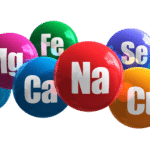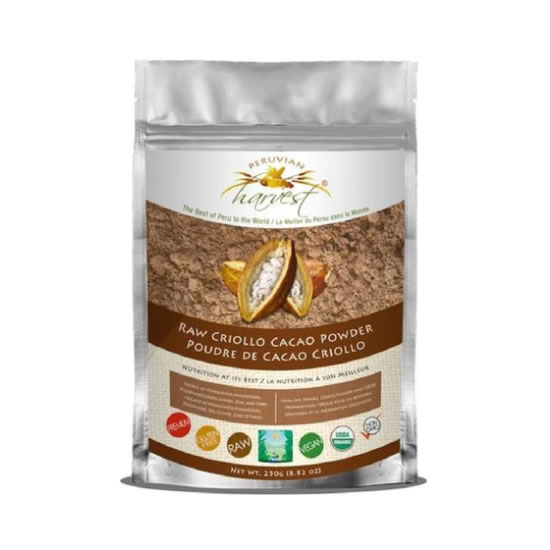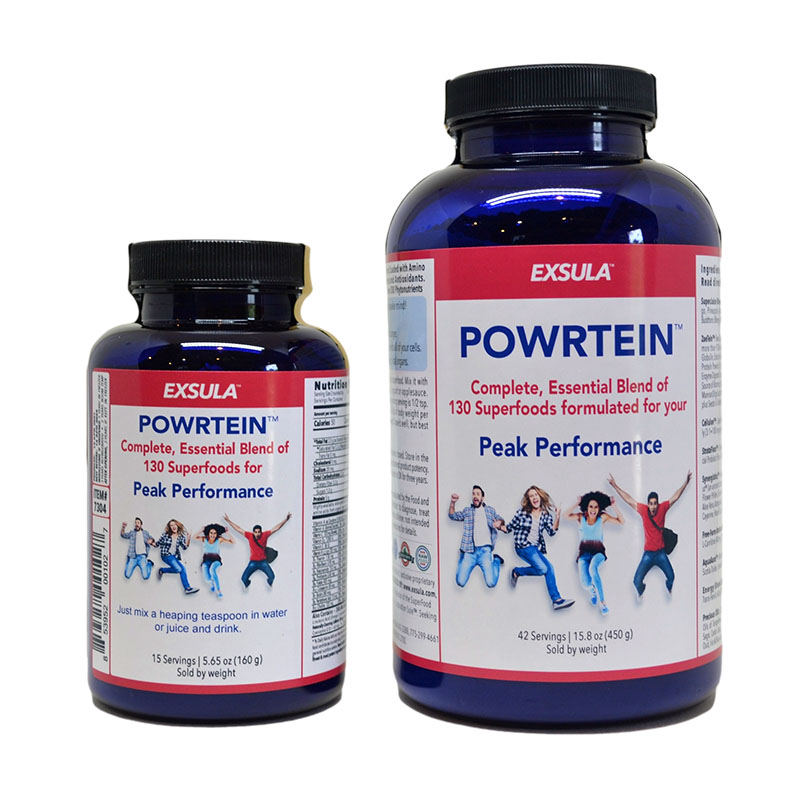No products in the cart.
Sugar Can Ruin Your Health 108 Ways
In addition to throwing off the body’s homeostasis, excess sugar may result in a number of other significant consequences. The following is a listing of some of sugar’s metabolic consequences from a variety of medical journals and other scientific publications.
- Sugar can suppress the immune system.
- Sugar can upset the body’s mineral balance.
- Sugar can cause hyperactivity, anxiety, concentration difficulties, and crankiness in children.
- Sugar can cause drowsiness and decreased activity in children.
- Sugar can adversely affect children’s school grades.
- Sugar can produce a significant rise in triglycerides
- Sugar contributes to a weakened defense against bacterial infection.
- Sugar can cause kidney damage.
- Sugar can reduce helpful high density cholesterol (HDLs).
- Sugar can promote an elevation of harmful cholesterol (LDLs).
- Sugar may lead to chromium deficiency.
- Sugar can cause copper deficiency.
- Sugar interferes with absorption of calcium and magnesium.
- Sugar may lead to cancer of the breast, ovaries, prostate, and rectum.
- Sugar can cause colon cancer, with an increased risk in women.
- Sugar can be a risk factor in gall bladder cancer.
- Sugar can increase fasting levels of blood glucose.
- Sugar can weaken eyesight.
- Sugar raises the level of a neurotransmitter called serotonin, which can narrow blood vessels.
- Sugar can cause hypoglycemia.
- Sugar can produce an acidic stomach.
- Sugar can raise adrenaline levels in children.
- Sugar can increase the risk of coronary heart disease.
- Sugar can speed the aging process, causing wrinkles and gray hair.
- Sugar can lead to alcoholism.
- Sugar can promote tooth decay.
- Sugar can contribute to weight gain and obesity.
- High intake of sugar increases the risk of Crohn’s disease and ulcerative colitis.
- Sugar can cause a raw, inflamed intestinal tract in persons with gastric or duodenal ulcers.
- Sugar can cause arthritis
- Sugar can cause asthma.
- Sugar can cause candidiasis (yeast infection).
- Sugar can lead to the formation of gallstones.
- Sugar can lead to the formation of kidney stones.
- Sugar can cause ischemic heart disease.
- Sugar can cause appendicitis.
- Sugar can exacerbate the symptoms of multiple sclerosis.
- Sugar can indirectly cause hemorrhoids.
- Sugar can cause varicose veins.
- Sugar can elevate glucose and insulin responses in oral contraception users.
- Sugar can lead to periodontal disease.
- Sugar can contribute to osteoporosis.
- Sugar contributes to saliva acidity.
- Sugar can cause a decrease in insulin sensitivity.
- Sugar leads to decreased glucose tolerance.
- Sugar can decrease growth hormone.
- Sugar can increase total cholesterol.
- Sugar can increase systolic blood pressure.
- Sugar can change the structure of protein causing interference with protein absorption.
- Sugar causes food allergies.
- Sugar can contribute to diabetes.
- Sugar can cause toxemia during pregnancy.
- Sugar can contribute to eczema in children.
- Sugar can cause cardiovascular disease.
- Sugar can impair the structure of DNA.
- Sugar can cause cataracts.
- Sugar can cause emphysema.
- Sugar can cause atherosclerosis.
- Sugar can cause free radical formation in the bloodstream.
- Sugar lowers the enzymes’ ability to function.
- Sugar can cause loss of tissue elasticity and function.
- Sugar can cause liver cells to divide, increasing the size of the liver.
- Sugar can increase the amount of fat in the liver.
- Sugar can increase kidney size and produce pathological changes in the kidney.
- Sugar can overstress the pancreas, causing damage.
- Sugar can increase the body’s fluid retention.
- Sugar can cause constipation.
- Sugar can cause myopia (nearsightedness).
- Sugar can compromise the lining of the capillaries.
- Sugar can cause hypertension.
- Sugar can cause headaches, including migraines.
- Sugar can cause an increase in delta, alpha and theta brain waves, which can alter the mind’s ability to think clearly.
- Sugar can cause depression.
- Sugar can increase insulin responses in those consuming high-sugar diets compared to low sugar diets.
- Sugar increases bacterial fermentation in the colon.
- Sugar can cause hormonal imbalance.
- Sugar can increase blood platelet adhesiveness which increases risk of blood clots.
- Sugar increases the risk of Alzheimer Disease.
- The ingestion of sugar can increase the levels of glucose in an oral glucose tolerance test over the ingestion of complex carbohydrates.
- Sugar can increase the insulin responses in humans consuming high-sugar diets compared to low sugar diets.
- Sugar increases bacterial fermentation in the colon.
- Sugar increases the risk of colon cancer in women.
- There is a greater risk for Crohn’s disease with people who have a high intake of sugar.
- Sugar can cause platelet adhesiveness.
- Sugar can cause hormonal imbalance.
- Sugar can lead to the formation of kidney stones.
- Sugar can lead to the hypothalamus to become highly sensitive to a large variety of stimuli.
- Sugar can lead to dizziness.
- High sucrose diet significantly increases serum insulin.
- High sucrose diets of subjects with peripheral vascular disease significantly increases platelet adhesion.
- High sugar diet can lead to biliary tract cancer.
- High sugar diets tend to be lower in antioxidant micro nutrients.
- High sugar consumption of pregnant adolescents is associated with a twofold increased risk for delivering a small-for- gestational-age (SGA) infant.
- High sugar consumption can lead to substantial decrease in gestation duration among adolescents with high sugar diets.
- Sugar slows food’s travel time through the gastrointestinal tract.
- Sugar increases the concentration of bile acids in stools and bacterial enzymes in the colon can modify bile to produce cancer-causing compounds and colon cancer.
- Sugar is associated with a substantial decrease in normal time of gestation among adolescents.
- Sugar can cause a depletion in chromium which is tied to the development and progression of nearsightedness.
- Sugar can be a risk factor of gallbladder cancer.
- Sugar is an addictive substance.
- Sugar can be intoxicating, similar to alcohol.
- Sugar can exacerbate PMS.
- Sugar suppresses lymphocytes.
- Decrease in sugar can increase emotional stability.
- The body changes sugar into 2 to 5 times more fat in the bloodstream than it does starch.
- Sugar can cause inappropriate behavior and decreased performance in children.
- Sugar can worsen the symptoms of children with attention deficit disorder (ADD).
- Sugar in chewing gum can cause dental caries.
Bibliography
- A. Sanchez, et al. “Role of Sugars in Human Neutrophilic Phagocytosis.”American Journal of Clinical Nutrition, November 1973, pp. 1180-1184
- F. Couizy, C. Keen, M.E.Gershwin, and F.P. Mareschi.Nutritional Implications of the Interaction between Minerals. Progressive Food and Nutrition Science 17, 1933, 65-87.
- J. Goldman, et al. “Behavioral Effects of Sucrose on Preschool Children,” Journal of Abnormal Child Psychology. 14 1986 565-577.
- D. Behar, J. Rapoport, Berg C., Adams, and M. Cornblat. “Sugar Testing with Children Considered Behaviorally Sugar Reactive. Nutritional Behavior 1 1984 277-288
- Alexander Schausss. Diet, Crime and Delinquecny (Berkeley, CA: Parker House 1981)
- S. Scanto and John Yudkin. “The Effect of Dietary Sucronse on Blood Lipids, Serum, Insulin, Platelet Adhesiveness and Body Weith in Human Volunteers. Postgraduate Medicine Jmournal 45: 1969 602-607
- W. Rinsdor, E. Cheraskin, and R. Ramsay. “Sucrose Neutrophlic Phagocystosis and Resistance to Disease. Dental Survey 52. 12 1976 46-48.
- J. Yudkin, S. Kang, and K. Bruckdorfer. “Effects of High Dietary Sugar.” British Journal of Medicine 281, November 22, 1980,p. 1396.
- Ibid.
- Lewis GF , Steiner G Acute effects of insulin in the control of VLDL production in humans. Implications for theinsulin-resistant state. Department of Medicine, University of Toronto, Canada. Diabetes Care 1996 Apr;19(4):390-3 R. Pamplona, M.J. Bellmunt, M. Portero, and J. Prat. “Mechanisms of Glycation in Atherogenesis.” Medical Hypotheses 40, 1990, pp. 174-181.
- A. Kozlovsky, et al. “Effects of Diets High in Simple Sugars on Urinary Chromium Losses.” Metabolism 35, June 1986, pp. 515-518.
- M. Fields, et al. “Effect of Copper Deficiency on Metabolism and Mortality in Rats Fed Sucrose or Starch Diets.” Journal of Clinical Nutrition 113, 1983, pp. 1335-1345.
- “Sugar and Prostate Cancer.” Health Express, October, 1982, p. 41.
- R.M. Bostick, J.D. Potter, L.H. Kushi, et al. “Sugar, Meat, and Fat Intake, and Non-dietary Risk Factors for Colon Cancer Incidence in Iowa Women.” Cancer Causes and Controls 5, 1994, pp. 38-52.
- Clara Moerman, et al. “Dietary Sugar Intake in the Etiology of Biliary Tract Cancer.” lnternational Journal of Epidemiology 22, No.2, 1993, pp.207-214.
- J. Kelsay, et al. “Diets High in Glucose or Sucrose and Young Women.” American Journal of Clinical Nutrition 27, 1974, pp. 926-936.
- J. Lemann. “Evidence That Glucose Ingestion Inhibits Net Renal Tubular Reabsorption of Calcium and Magnesium.” Journal of Clinical Nutrition 70, 1967, pp. 236-245.
- H. Ed Taub, ed. “Sugar Weakens Eyesight.” VM Newsletter 5, May 1986.
- Richard Wurtman. University of California, Berkeley, Newsletter 6, No. 3, December 1989, pp.4-5.
- William Dufty. Sugar Blues. (New York: Warner Books,1975.)
- Ibid.
- J. Lewis. “Health Briefings.” Fort Worth Star Telegram, June 11, 1990.
- Katz RJ , Ratner RE , Cohen RM , Eisenhower E , Verme D Are insulin and proinsulin independent risk markers for premature coronary artery disease – Department of Medicine, Division of Cardiology, George Washington University School of Medicine, Washington, DC 20037, USA. Diabetes 1996 Jun;45(6):736-41
- Annette T. Lee, and Anthony Cerami. “The Role of Glycation in Aging.” Annals of the New York Academy of Science 663, pp. 6370. D.G. Dyer, et al. “Accumulation of Maillard Reaction Products in Skin Collagen in Diabetes and Aging.” Journal of Clinical Investigation 91, No. 6, June 1993, pp. 421-422.
- E. Abrahamson, and A. Peget. Body, Mind and Sugar. (New York: Avon, 1977.)
- W. Glinsmann, H. Irausquin, and K. Youngmee. Report from FDA’s Sugar Task Force, 1986: Evaluation of Health Aspects of Sugars Contained in Carbohydrate Sweeteners. (Washington, DC: Center for Food Safety and Applied Nutrition, 1986, p. 39.)
- H. Keen, B. Thomas, R. Jarrett, and J. Fuller. “Nutrient Intake, Adiposity, and Diabetes.” British Medical Journal 6164, No. 1, March 10, 1979, pp. 655-658.
- T. Cleave. Sweet and Dangerous. (New York: Bantam Books, 1974, pp. 28-43.) B.G. Persson, et al. “Diet and Inflammatory Bowel Disease.” Epidemiology 3, No. 1, January 1992, pp. 47-51.
- T. Cleave. Sweet and Dangerous. (New York: Bantam Books, 1974, pp. 157-159.)
- L. Darlington, Ramsey, and Mansfield. “Placebo-Controlled, Blind Study of Dietary Manipulation Therapy in Rheumatoid Arthritis.” Lancet 8475, No. 1, February 6,1986, pp.236-238.
- Lawrence Powers. “Sensitivity: You React to What You Eat.” Los Angeles Times, February 12, 1985.
- W. Crook. The Yeast Connection. (Jackson, TN: Professional Books, 1984.) 3
- K. Heaton. “The Sweet Road to Gallstones.” British Medical Journal 288, April 14, 1984, pp. 1103-1104.
- N.J. Blacklock. “Sucrose and Idiopathic Renal Stone.” Nutrition and Health 5, No. 1-2, 1987, pp. 9-17.
- J. Yudkin. “Dietary Fat and Dietary Sugar.” Lancet, August 29, 1964, pp. 478-479.
- T. Cleave. The Saccharine Disease. (New Canaan, CT: Keats Publishing, 1974, p. 125.)
- S. Erlander. “The Cause and Cure of Multiple Sclerosis.” The Disease to End Disease 1, No. 3, March 3, 1979, pp. 59-63.
- T. Cleave. The Saccharine Disease. (New Canann, CT: Keats Publishing, 1974, p. 45.)
- T. Cleave, and G. Campbell. Diabetes, Coronary Thrombosis and the Saccharine Disease. (Bristol, England: John Wright and Sons, 1960.)
- K. Behall. “Influence of Estrogen Content of Oral Contraceptives and Consumption of Sucrose on Blood Parameters.” DiseaseAbstracts International B. 43, 1982, p. 1437.
- W. Glinsmann, H. Irausquin, and K. Youngmee. Report from FDA’s Sugar Task Force, 1986: Evaluation of Health Aspects of Sugars Contained in Carbohydrate Sweeteners. (Washington, DC: Center for Food Safety and Applied Nutrition, 1986, p. 39.)
- Nancy Appleton. Lick the Sugar Habit Bones. (Garden City Park, NY: “Reaction of Monosaccharides Avery Publishing Group, 1989, with Protein: Possible Evolupp. 36-38.)
- Schrezenmeir J III.Hyperinsulinemia, hyperproinsulinemia and insulin resistance in the metabolic syndrome. Medical Clinic, Johannes-Gutenberg University, Mainz, Germany. Experientia 1996 May 15;52(5):426-32
- H. Beck-Nelson., O. Pedersen, and Sorensen Schwartz. “Effects of Diet on the Cellular Insulin Binding and the Insulin Sensitivity in Young Healthy Subjects.” Diabetes 15, 1978, pp. 289-296.
- H. Keen, B. Thomas, R. Jarrett, and J. Fuller. “Nutritional Factors in Diabetes Mellitus.” J. Yudkin, ed. Applied Science, 1977, pp. 89-108.
- L. Gardner, and S. Reiser. “Effects of Dietary Carbohydrate on Fasting Levels of Human Growth Hormone and Cortisol.” Proceedings of the Society for Experimental Biology and Medicine 169, 1982, pp. 3640.
- S. Reiser. “Effects of Dietary Sugars on Metabolic Risk Factors Associated with Heart Disease.” Nutritional Health 3,1985, pp. 203-216
- R. Hodges, and T. Rebello. “Carbohydrates and Blood Pressure.” Annals of Internal Medicine 98, 1983, pp. 838-841.Insulin, hypertension and antihypertensive drugs in elderly patients: the Rotterdam Study. Stolk RP , Hoes AW , Pols HA , Hofman A , de Jong PT , Lamberts SW , Grobbee DE Department of Epidemiology and Biostatistics, Erasmus University Medical School, Rotterdam,The Netherlands. J Hypertens 1996 Feb;14(2):237-42
- J. Simmons. “Is the Sand of Time Sugar?” Longevity, June 1990, pp. 49-53. F. Bunn, and P.J. Higgins. Significance.” Science 213, July 10, 1981, pp. 222-224. Anthony Cerarni, Helen Vlassara, and Michael Brownlee. “Glucose and Aging.” Scientific American, May 1987, p.90.
- Nancy Appleton. Healthy Bones. (Garden City Park, NY: Avery Publishing Group, 1991.)
- Jenkins DJ , Jenkins AL – Nutrition principles and diabetes. A role for “lente carbohydrate” – Department of Nutritional Sciences, University of Toronto, Ontario,Canada. Diabetes Care 1995 Nov;18(11):1491-8″Sucrose Induces Diabetes in Cats.” Federal Protocol 6, No. 97, 1974.
- T. Cleave. The Saccharine Disease. (New Canaan, CT: Keats Publishing, 1974, pp. 132-133.)
- Ibid. 54. Ruth L. Caccaro, and J. Stamle. “Relationship of Postload Plasma Glucose to Mortality with a Follow-Up.”
- Diabetic Care 15, No. 10, October 1992.
- Annette T. Lee, and Anthony Cerami. “Modifications of Proteins and Nucleic Acids by Reducing Sugars: Possible Role in Aging.” Handbook of the Biology of Aging. (New York: Academic Press, 1990.)
- Suresh I.S. Rattan, Anastasia Derventzi, and Brian Clark. “Protein Synthesis, Post-translational Modifications, and Aging.” Annals of the New York Academy of Sciences 663, 1992, pp. 48- 62.
- V.M. Monnier. “Nonenzymatic Glycosylation, the Maillard Reaction and the Aging Process.” Journal of Gerontology 45, No. 4, 1990, pp. 105-110.
- 58. R Pamplona, M.J. Bellmunt, M. Portero, and J. Prat “Mechanisms of Glycation in Atherogenesis.” Medical Hypotheses 40, 1990, pp.174-181.
- Ibid.
- Nancy Appleton. Healthy Bones. (Garden City Park, NY: Avery Publishing Group, 1991.)
- Annette T. Lee, and Anthony Cerami. “The Role of Glycation in Aging.” Annals of theNew York Academy of Science 663, pp.63-70.
- Frances Sheridan Goulart. “Are You Sugar Smart?” American Fitness, March-April 1991, pp. 34-38.
- Ibid.
- Ibid.
- Ibid. Kurt Greenberg. “An Update on the Yeast Connection.” Health News and Review, Spring 1990, p. 10.
- Frances Sheridan Goulart. “Are You Sugar Smart?” American Fitness, March-April 1991, pp. 34-38.
- Ibid.
- Ibid.
- Ibid.
- Landsberg L Insulin sensitivity in the pathogenesis of hypertension and hypertensive complications. Department of Medicine, Northwestern University Medical School, Chicago, Illinois 60611, USA. Clin Exp Hypertens 1996 Apr-May;18(3-4):337-46
- Jonell Nash. “Health Contenders.” Essence 23, January 1992, pp. 79-81. E. Grand. “Food Allergies and Migraine.” Lancet 8126, No. 1, 1979, pp. 955-959.
- Larry Christensen. “The Role of Caffeine and Sugar in Depression.” The Nutrition Report 9, No. 3, March 1991, pp. 17-24.
- Ibid.
- Shelton Reiser, J. Hallfrisch, M. Fields, et al. “Effects of Sugars on Indices on Glucose Tolerance in Humans.” American Journal of Clinical Nutrition 43, 1986, pp. 151-159.
- W. Kruis, G. Forstraier, C. Scheurlen, and F. Stellaard. “Effects of Diets Low and High in Refined Sugars on Gut Transit, Bile Acid Metabolism and Bacterial Fermentation.” Gut 32, 1991, pp. 367-370.
- John Yudkin. “Metabolic Changes Induced by Sugar in Relation to Coronary Heart Disease and Diabetes.” Nutrition and Health 5, No.1-2, 1987, pp. 5-8.
- Ibid.
- Craft S , Newcomer J , Kanne S , Dagogo-Jack S , Cryer P , Sheline Y , Luby J , Dagogo-Jack A, Alderson A Memory improvement following induced hyperinsulinemia in Alzheimer’s disease. Department of Psychology, Washington University, St. Louis, MO 63130, USA. Neurobiol Aging 1996 Jan-Feb;17(1):123-30
- Reiser, Shelton, Hallfrisch J, Fields M, et al., Effects of Sugars on Indices on Glucose Tolerance in Humans,”AMERICAN JOURNAL OF CLINICAL NUTRITION 43 (1986): 151-159.
- Ibid.
- Kruis, W., Forstraier, G., Scheurlen C., and Stellaard F., “Effects of Diets Low and High in Refined Sugars on Gut Transit, Bile Acid Metabolism and Bacterial Fermentation, GUT 32 (1991): 367-370.
- Bostick R. M., Potter, J. D., Kushi L. H., et al, “Sugar Meat, and Fat Intake, and Non-dietary Risk Factors for Colon Cancer Incidence in Iowa Women,” CANCER CAUSES AND CONTROL 5 (1994):38-52.
- Persson B. G., Ahlbom, A., and Hellers, G., EPIDEMIOLOGY 3n no.1 (1992): 47-51.
- Yudkin, John, “Metabolic Changes Induced by Sugar in Relation to Coronary Heart Disease and Diabetes, ” NUTRITION AND HEALTH 5, no. 1-2 (1987): 5-8.
- Ibid.
- Blacklock, N. J., “Sucrose and Idiopathic Renal Stone,” NUTRITION AND HEALTH 5, no. 1-2 (1987): 9-17. Curhan, Gary et al, “Beverage Use and Risk for kidney Stones in Women, ANNALS OF INTERNAL MEDICINE, 1998,128: 534-340.
- JOURNAL OF ADVANCED MEDICINE, 1994 7(1): 51-58
- Ibid
- Ibid
- POSTGRADUATE MEDICINE ,Sept 1969: 45(527):602-07.
- Moerman, Clara J. etc., INTERNAL JOURNAL OF EPIDEMIOLOGY April 993:22(2)207-214.
- Ibid.
- JOURNAL OF NUTRITION 1997; 127: 1113-1117.
- Ibid.
- R. M. Bostick, J. T. Potter, et al. “Sugar, Meat and Fat Intake, and Non-Dietary risk factors for Colon Cancer Incidence in Iowa Women.” CANCER CAUSES CONTROL, 5, 38-53, 1994.
- Ibid.
- JOURNAL OF NUTRITION, 127, 1997; 1113-1117.
- Ibid.
- Moerman, Clara et al.,”Dietary Sugar Intake in the Etiology of Biliary Tract Cancer,” INTERNATIONAL JOURNAL OF EPIDEMIOLOGY 22 no. 2 (1993): 207-214.
- “Sugar, white floor Withdrawal Produces Chemical Response,” THE ADDICTION LETTER (July 1992):4.
- Ibid.
- THE EDELL HEALTH LETTER Sept ’91; 10:7(1)
- Bernstein, J, et. al, “Depression of Lymphosyte Transformation Following Oral Glucose Ingestion.” AMERICAN JOURNAL OF CLINICAL NUTRITION, 30, 613, 1977.
- JOURNAL OF ABNORMAL PSYCHOLOGY No. 85,1985.
- NUTRITIONAL HEALTH REVIEW, Fall 85
- JOURNAL OF ABNORMAL CHILD PSYCHOLOGY, 12/86, Vol. 14, No. 4: (567-577).
- PEDIATRICS RESEARCH 38, 4, (1995): 539-542.
- Maakinen KK; Hujoel PP; Bennett CA; Isokangas P; Isotupa K; Pape HR Jr; Maakinen PL, “A Descriptive Report of the Effects of a 16-month Xylitol Chewing-gum Programme Subsequent to a 40-month Sucrose Gum Programme.” CARIES RES, 32(2):107-12 1998
The list was contributed by Nancy Appleton, Ph.D. who has a web site athttp://www.nancyappleton.com/ She is also the author of the book Lick The Sugar Habit







